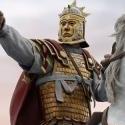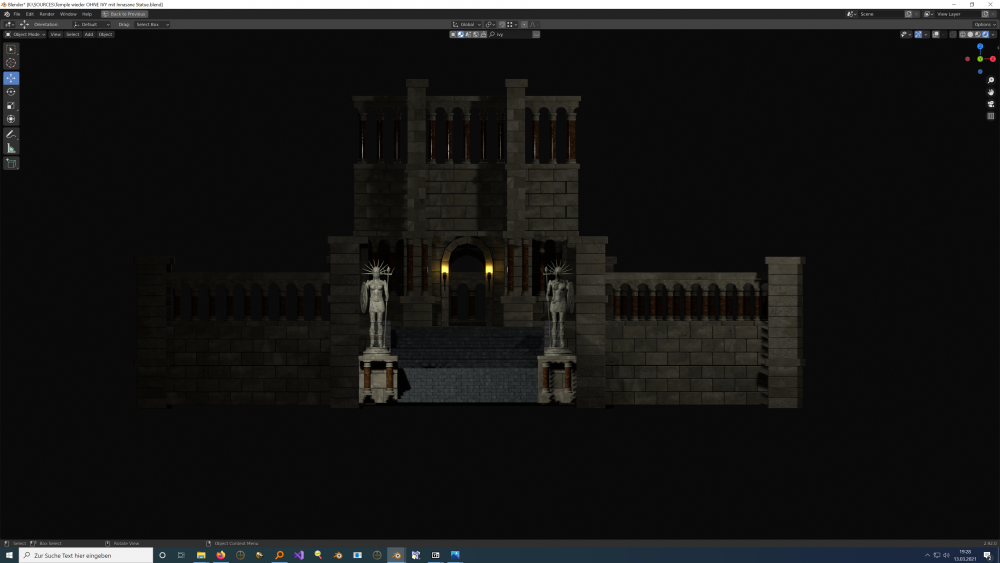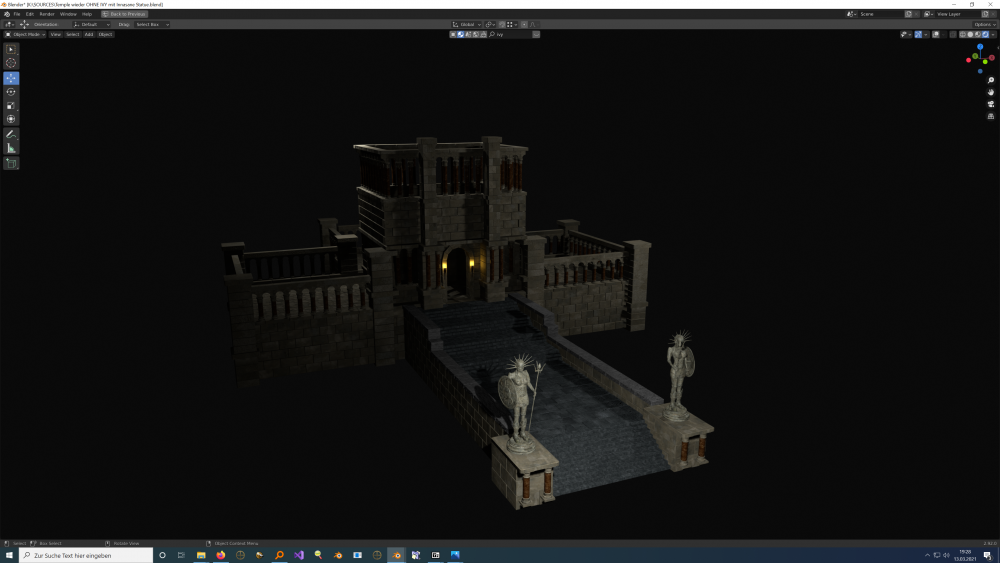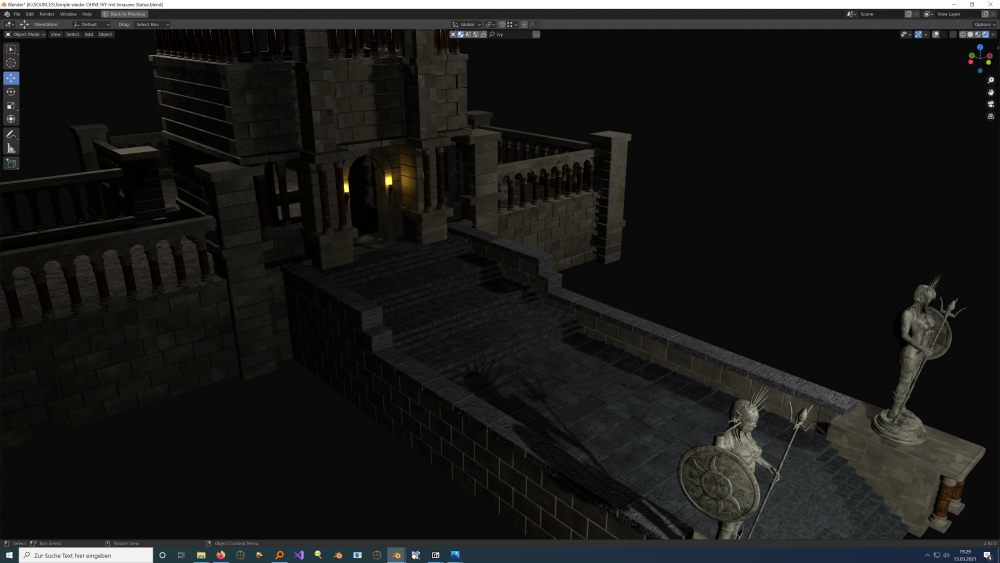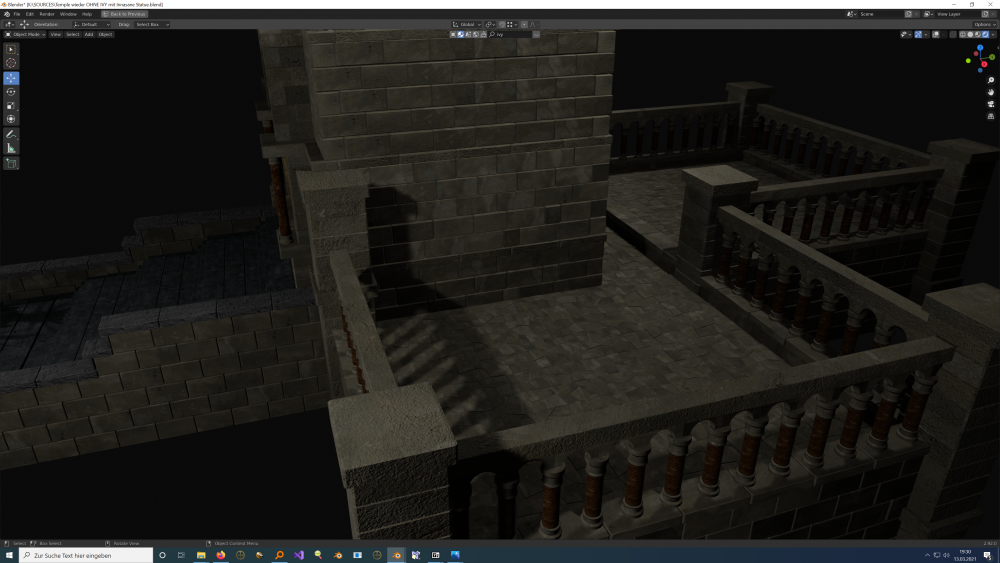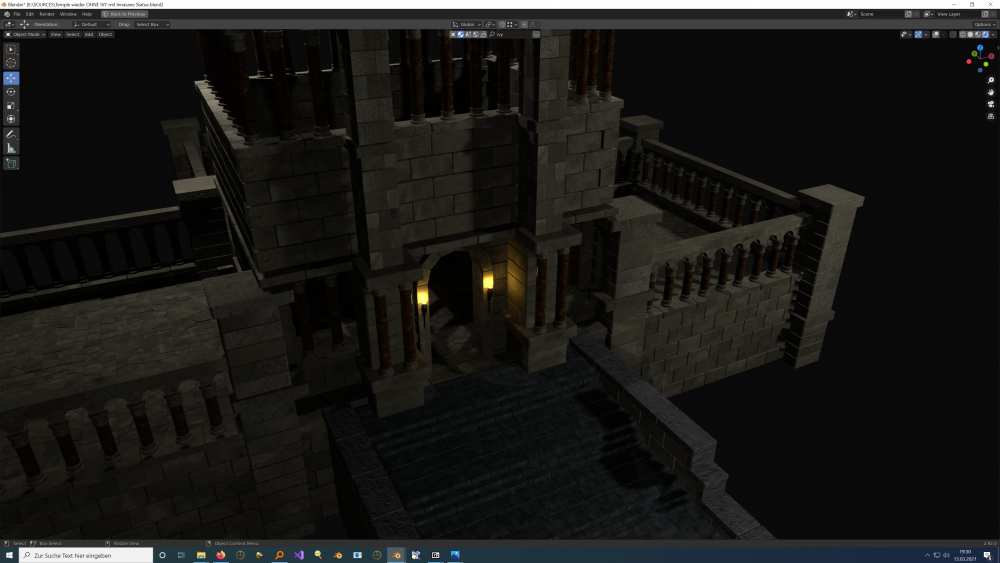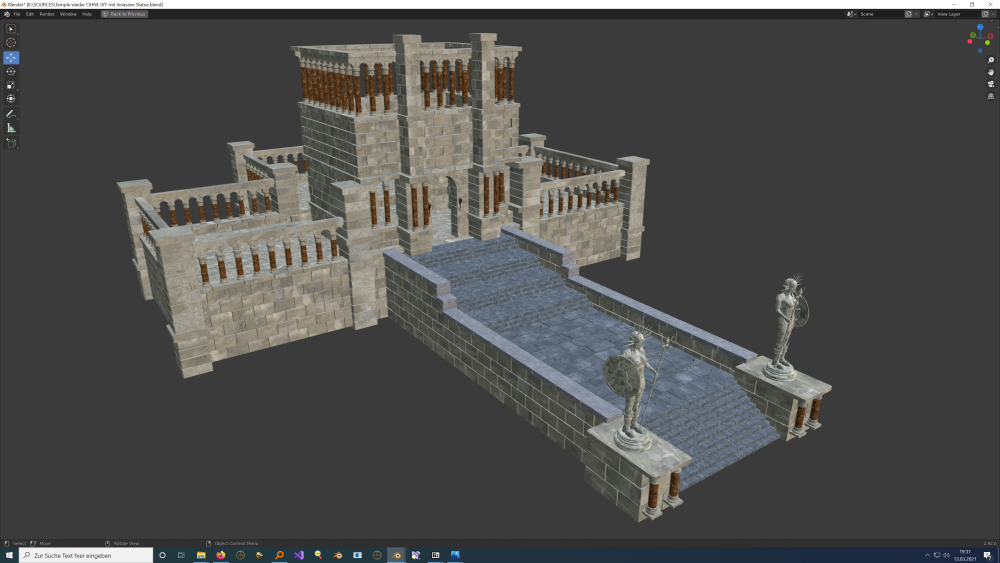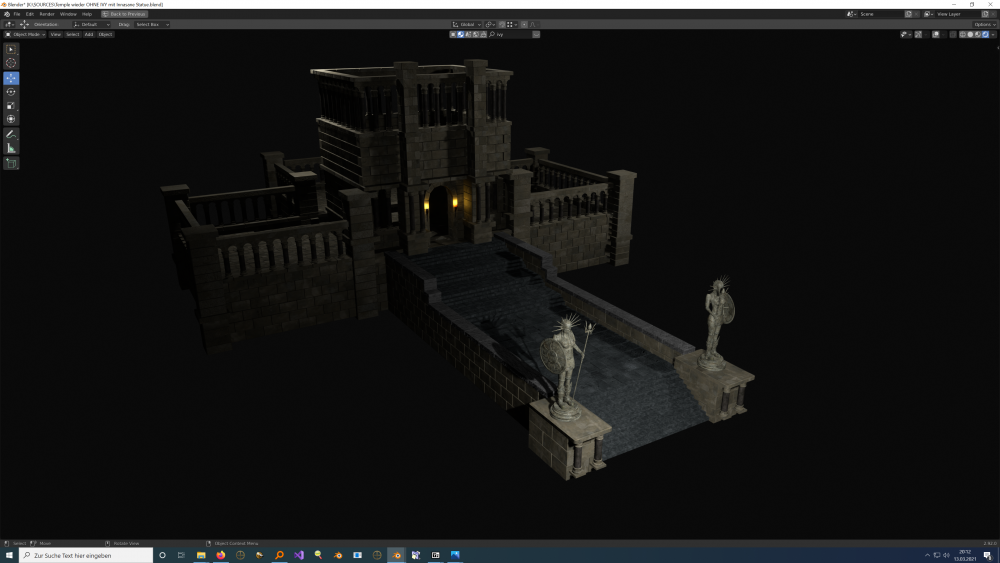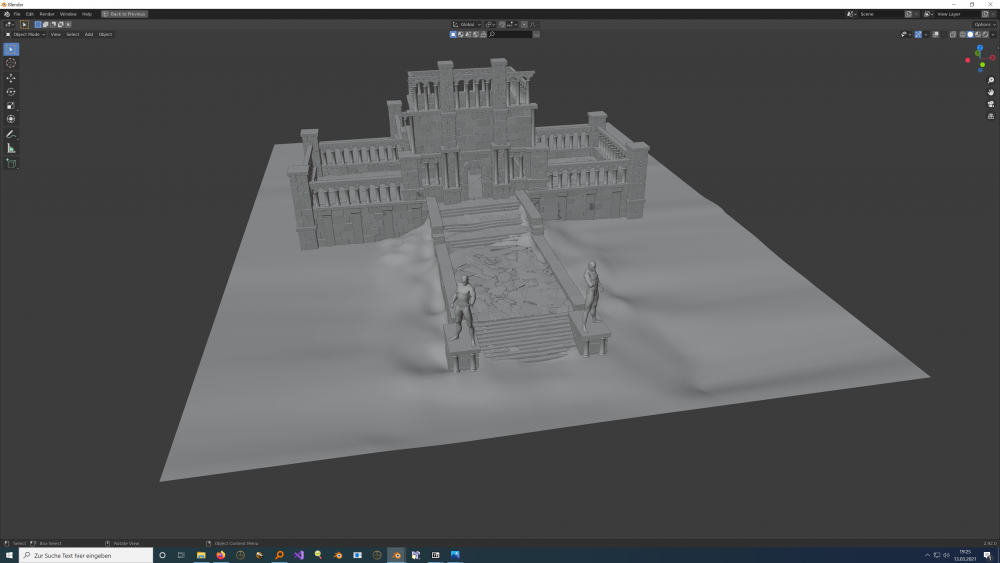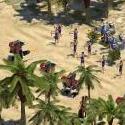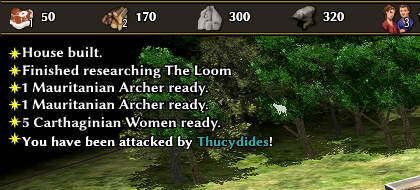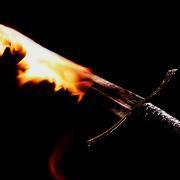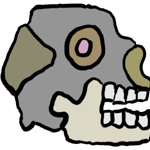Leaderboard
Popular Content
Showing content with the highest reputation on 2021-03-14 in Posts
-
Hello ! I have seen plenty of feedback and complain about A24. So I will share with you my personal feedback, I hope it will be constructive and maybe help some people to understand the new Alpha. Some point can be redundant with other feedbacks; I just want to be exhaustive (As much as I can), I don’t want to insist on any point. Civilizations strength and weakness : Athenians: A23 : Used to be a strong civilization due to Strong slingers, very good hero Iphicrates (+3 overall resistances) and black cloak for siege sniping and raiding. A24 : Seems a bit weaker due to weaker slingers, hero permanent death and no more black cloaks. Strength: Stronger building +10% metal gather rate per phase Iphicrates Slingers for low wood map Archer champions Weakness: All ranged infantry are based on minerals (stone/metal). Sword infantry trainable only in docks. -> Athenians weaker in A24 than in A23 (It’s OK, they were too strong) Britons : A23: Top 3 civilization, strong economic bonuses (population space on every building/building faster to build/rotary mill), decent hero, strong early slingers rushes. A24: Better balance, small economic bonus with building faster to build, Dog phase 1 strong for rushes (can easily deny all food income of your enemy), decent hero. Strength: Faster building Dogs Rushes (Good micro mandatory) Weakness: Weaker building Only rams as siege weapon -> Britons weaker in A24 than in A23 but still decent, harder to play, not a beginner civilization anymore. Carthaginians: A23 : Decent civilization, strong cavalry, very strong hero, variety of siege weapon make them adaptable to situations. A24 : Strong civilization, very strong hero, Strong archer, variety of siege weapon make them adaptable to situations. Very good team play: Hannibal Barca + international trade bonuses. Strength: Cheaper docks Strong hero International trade bonuses Massive Stone Walls (good option now due to floating stone) Apartment Weakness: Swordsman only as mercenaries -> Carthaginians stronger in A24 than in A23. Well balanced now. Gauls: A23: Top 3 civilizations, strong economic bonuses (population space on every building/building faster to build/rotary mill), strong heros and fanatic strong for raids. A24: Decent civilization, economic bonuses (building faster to build/extra food upgrade).Very strong power spike at phase 2 due to extra damage on sword cavalry en cheaper fanatic. New champions, Heroes easier to reach. (Cheaper stable and barracks.) Strength: Building faster to build Extra food upgrade phase 2, helps for the sword cavalry spam. Strong Heroes Strong melee cavalry (+15% damage) Strong team bonus Weakness: Only rams has siege weapon Weaker buildings -> Gauls weaker in A24 than in A23 but still decent. Harder to play, not a beginner civilization anymore. Iberians: A23: decent civilization mostly played for its team bonus, decent hero. Very defensive civilization. A24: decent civilization weaker team bonus, decent hero, Strong cavalry champions. Strength: Good hero Very strong champion cavalry (fire damage) Extra sword upgrade Revered Monument Massive towers Starting walls Very strong fire ship Weakness: No economic bonuses Only rams as siege weapon (Ok there is champion cavalry) No counter to melee cavalry phase 1 -> Iberians are stronger in A24 than in A23, They are more independent and don’t need to rely only on their allies. Kushites: A23: Worst civilization, even with decent heroes, economic bonuses (pyramids). Team bonus not useful due to weak elephants. Weak unique mercenaries, costly rank 3 healers. A24: Strong civilization, Decent heroes Economic bonuses (pyramid). Strong team bonus, Strong unique mercenaries, free rank 3 upgrade healer. Strong unique Axeman champions. Strength: Small Pyramid (+15% gather speed) Large Pyramid (+10% damge +1 resistance) Rank 3 healers Stronger rams Mercenaries maceman Champion Axeman Decent Heroes Archery tradition (+10 attack range for archers) Weakness: None -> Kushites are way stronger in A24 than in A23, many gameplay possibilities. Macedonians: A23: One of the worst civilizations no swords, no spears, useless heroes, no economic bonuses. A24: A bit better thanks to champion swordsman, New champion crossbowman (a bit weak can’t be spammed due to massive overkill) Strength: Phase 1 spear cavalry Variety of siege weapons Hellenistic Metropolis (Civic center +100% Health points) Stronger buildings Weakness: No economic bonuses No spear infantry (except champions) -> Macedonians Slightly stronger in A24 than in A23 but remain as a bad civilization Mauryas : A23 : Decent civilization (Very strong in nomad games), Heroes a bit weak, economic bonuses (Elephant worker), +10% population limit, only elephant as siege weapon (except expensive champions maceman and tricky rams) A24 : Very strong civilization, Heroes still weak, economic bonuses (Elephant worker), +10% population limit, Strong unique champion maceman, Strong Archer chapions, Strong elephant archer, Indian siege elephant, access to rams.(cheaper barracks/stable) Strength: Elephant Workers +10% population limit Elephant faster to recruit Indian Siege Elephant Extra Sword upgrade Archery tradition Unique Champion Maceman Strong archer champions (poison damage) Strong archer elephants Cheap Walls Weakness: None -> Mauryas are stronger in A24 than in A23 Persians: A23: Good civilization, slow start and very strong late game. Extra population limit, over powered cavalry, no economic bonuses, Average heroes, strong rams. Apadana (resources trickle) A24: Strong civilization, balanced cavalry, extra population limit, double conscription, strong rams, Indian elephants. Apadana (resources trickle), average hero, huge trading bonus. Strength: +10% population limit Archery Tradition Double conscription Indian Elephants Strong Rams Apadana (Resources trickle 1food + 1wood +0.75stone +0.75metal/seconds) +25% trade gain Weakness: No early economic bonus -> Persians have a stronger start and weaker late game in A24 than in A23. Civilization way better balanced than in A23. Ptolemies: A23: Top 3 civilization, economic bonus (free buildings), good team bonus, Strong heroes, strong army compositions, large variety of siege weapons. Very strong navy: Lighthouse, Juggernaut. Camel Archer Phase 1. A24: Very strong civilization, economic bonus (cheaper buildings), good team bonus Strong Heroes, strong army compositions, large variety of siege weapons. Camel Archer Phase 1. Standard navy. Strength: Cheaper buildings (-40% cost for house, corral, storehouse and farmstead) Strong heroes (and in Civic Center) Variety of siege weapons Stronger Bolt Shooter (faster less overkill) Library Hellenistic Metropolis Military Colony Camel archer at phase 1. Weakness: Swordsman only as mercenaries All ranged infantry are based on minerals (stone/metal). Spear unit only as mercenaries -> Ptolemies are slightly weaker in A24 than in A23. A bit better balanced but still very strong. Romans: A23: Strong civilization, good heroes, good team bonus, strong siege, very strong military camps, spear cavalry phase 1. No palisade and no economic bonuses. A24: Decent civilization, good heroes, good team bonus, strong siege, weaker military camps, spear cavalry phase 1. Now they have palisade Phase 1. No economic bonuses. Strength: Castra (Army camp) Strong heroes Strong siege Good team bonus Spear cavalry phase 1 Weakness: No economic bonus -> Romans are weaker in A24 than in A23. (It would have been great to have other kind of unit in castra than only melee) Seleucids: A23: Decent civilization, medium heroes, variety of siege units, good army compositions. No economic bonuses. A24: Decent civilization, medium heroes, variety of siege units, good army compositions. No economic bonuses.(no change overall) Strength: Free champion infantry upgrade Military Colony Hellenistic Metropolis Variety of siege units Good army compositions Weakness: No economic bonus -> Seleucids remain a decent civilization in A24. Better balance overall now. Spartans: A23: Good civilization, good heroes, strong women, skiritai and black cloaks phase 2 (huge power spike phase 2),the Agoge (+25% health to spear units). No economic bonus and population limit penalty (-10%) A24: Medium civilization, good heroes, strong women, no more population limit penalty. No more black cloaks and skiritai 25% more expensive. No economic bonus. Strength: Good Heroes Strong women (stronger than javelineer with loom) Stronger buildings Weakness: No economic bonus Only rams has siege weapon -> Spartans weaker in A24 than in A23. The change on the skiritai is a bit too much in my opinion. Overall balance: Lack of Metal: The current overall metal cost is fine for 1v1 when you have access to several metal mine. Contrariwise for team games 90% of the time you only have access to your starting mine (so 5000 metal). Economic upgrades: 1600 Metal Wood = 600 Metal Food = 600 Metal Stone ~ 200 Metal (1 or 2 upgrade, more is useless cause not enough mines) Metal ~ 200 Metal (1 or 2 upgrade, more is useless cause not enough mines) Forge upgrades : 4000 Metal Melee = 1000 Metal Range = 1000 Metal Hack = 1000 Metal Pierce = 1000 Metal Other upgrades : 5350 Metal Cartography = 100 Metal Cavalry = 350 Metal Will to fight = 1500 Metal Towers = 1000 Metal Siege = 1100 Metal Temple = 750(+600)Metal Trade = 550 Metal Buildings: 700 Metal Civic Center / Military Colony = 500 / 200 Metal Hero Building = 200 Metal Units: Hero = 400/350/300/200/150 Metal Champions = 100/80 Metal Mercenaries = 60/80 Metal Siege = 150/180/250/220 Metal Trader = 80 Metal -> Just for economic and basic forge upgrade you don’t have enough metal on your starting mines. New forge upgrades: They are way better than it used to be. Having same upgrade for infantry and cavalry allow a faster adaptation to your opponent composition. For example, your enemy is going full archer then just go melee cavalry to clean is army. A bit too expensive. Due to the lack of metal. Mercenaries: Very expensive due to the lack of metal. (only 80 resources but all resources don’t have the same cost) Similar strength as standard units but doesn’t gather resources. Costly Rank 2 upgrade. (they should be rank 2 by default and upgrade for rank 3) Faster to train -> Expensive unit for panic situations. Never used technologies and building: Theatron: currently way too expensive a barrack on the border is the same and at least it produces units. Outpost: useless in A24 Naval Shipyard: Units repairing ships are better and less expensive. Edict Pillar of Ashoka: hard to reach, expensive, not very useful because buildable only on own territory. Monumental Architecture: too expensive for a bonus/penalty upgrade. Persian Architecture: way better than Monumental Architecture but still an bonus/penalty upgrade. Spying technologies: 500 food + 500 metal + 600 metal is way too much expensive. A standard cavalry do better it cost only 150 resources and it can fight. Ranged Infantry Balance: Without any micro archers are stronger than javelineers and slingers Bigger range makes units easier to micro Weaker units (less Health Points) makes ranged unit even stronger. -> Archer units are too strong. Maybe give back the A23 statistics to the slingers and give 2 or 3 standard pierce resistance to the javelineers making them stronger against ranged units and still weak against melee.(like this all 3 ranged infantry are unique) Catapults: Catapult are way weaker than they used to be in A23, they are useless against units (which is great) they are easily destroyed by archers, they deal very few damage. However they are a bit too expensive : they are more expensive than rams and elephants. I suggest to reduce their resources price and also the population cost, 3 is too much currently 2 might be better. “Turtling”: The consequence of many change made turtling (staying on your base waiting your opponent to suicide on your defence) too strong. Building are way more deadlier than they used to be. Demography: Hard to keep a high population: Units have less Health points. (impact the overall balance) Units are longer to train. -> HP bonus per phase was nice. Miscellaneous: Slingers now use their ranged weapon to attack wolves! Ambriorix now is worth it ! No more penalty it’s great ! Hero permanent death, it will be fixed on A25 apparently. (Am I right?) Units turning : It avoid dancing abuse, which is good, but maybe the better ranged accuracy was enough. Slow down the game. Retreat is now similar to suicide. Trading ships : They are clumsy, they can’t be spamed. The trader garrison bonus is not enough. A trader + a merchantman should carry the same amout of resources between two docks as a merchantman with a trader garrisoned. Wonders: Doing the population limit bonus as a percentage is really great. Celtic population bonus in every building was too strong but it was a great to have. Instead of removing it completely reducing it would have been nice. Bugs : DDOS: Finishing a game is really rare. (balance issue is nothing compared to this) Lags: currently the game lags way too much making it not very enjoyable to play. (I wonder if a smart person can make a “cubic” mod to replace all 3D design/texture/animation by cubic shaped volumes without animation with mono coloured texture. To reduce lags) Graphical issues example: destroying animation of mauryan barracks is broken, half of the walls disappear. Pathfinding issues : Units are clumsy Units disobey Units have their own will Units auto focus : Units are automatically focusing palisade, field and walls. This is game breaker your entire army can be killed because they hate fields. Example : Units don’t protect siege units when opponent ungarrison building because they are attacking field or palisade or walls. Also for ship, a shore fight between 2 ships, can be unbalanced by the presence of palisade on the shore. -> Unit should attack (capture aswell) buildings only if they are tasked to. Philip V doesn’t have full description on the learn to play panel. Rank 2 units in castra are not specified in the description. Rank 3 Healer in PR’IMN are not specified in the description. Wrong hero description for Caratacos in French. Personal feeling about the future: I have seen some proposition on the forum about gameplay “innovation” and I feel like it tend to copy similar RTS games such as Age of Empire 2. For exemple the food decay, the scout phase 1, cavalry not able to hunt anymore, stable, siege workshop... I am a bit sad about that, this game is wonderful and unique. It can be improved with real gameplay innovation such as regenerative fishes, trees and berries. There is no need to copy other archaic games. In the other hand lately Age of Empire tend to do the same and copy 0AD innovations: Soldier able to build Dock used as resources deposit Units can be garrisoned in houses -> I hope it is just a feeling. To conclude, in my opinion it is great that many issues has been discovered on this Alpha, it can’t be perfect the 1st time but it can always be improved. It is mostly the negative part pointed out but the work done is really great! Overall it is nice to play on this Alpha! Thank you everyone who contributed to this project! Post Scriptum : I have seen lots of complain about this Alpha but note that everybody has access to the next Alpha on SVN, you can test it and give your feedback before its release.4 points
-
Hey, As a work in progress update, there you have screenshots of the blockout phase. Many thanks to all your references and for the work @Obskiuras. Nothing better than good concept art to be efficient in modeling. It's going to be faster and faster as I'm doing a modular approach, so each building becomes easier. Once all will be done, I'll do the texture atlas to have a good feeling of the whole. Even if it's a wip you are welcome and encouraged to add your grain of salt. Like, I thing pointy palisade are better as per @Lion.Kanzen (I think?) recommendation for the great hall. And after 'finishing' the Civ Center, I'll try to make a version larger in Y (green axis) and shorter. It may be better. Of course, here the blend. in case the volcano goes off. sueban_buildings_blockout.blend4 points
-
There should be an option to upgrade Iberian slingers and make them better slingers than Gaul/Athenian/Ptole - I have seen from a few forums that there are proposals to make Iberian slingers stand out for being better then other civ slingers from historical perspecitve so I put this proposal like this: a Make a tech at phase 2 or 3 that would add +2 crush damage and change the price from 30 stone to 30 metal for slingers and name the tech "Metal missiles" This would be like an archery tradition but for slingers - it should also take into account Iberian mercenary slingers for Carthage3 points
-
Zapotecs version 0.1 Based heavily upon the great work being done by the Terra Magna mod team The Zapotec lived in the Valley of Oaxaca, the largest expanse of relatively flat land in southern Mexico. Around 500 B.C.E. they built Monte Albán on the flattened top of a mountain in the center of the valley, the first urban center in Mesoamerica. Monte Albán covered an area of 2.5 square miles and its population grew from 5,000 to 25,000. It boasted the first centralized political system and population divided into social classes. Lasting for about a 1,000 years it became the dominant power in southern Mexico, ruled by nobles and strong military. Lacking in a strong agricultural base, their economy was based on the collection of tribute from surrounding groups. By the 7th century C.E. its power began to wane through competition and unsustainable population growth. Other characteristic features of Zapotec civilization can be found in the periods following Monte Albán's founding, including a characteristic two-chambered temple architecture, a market system, a rubber-ball game, and the human-like funerary vessels called Zapotec urns. Between 200 - 900 C.E. Monte Albán acquired a Classic style representative of Mesoamerican groups, most likely through conquest. Population growth, writing, architecture and art flourished, centering around the noble class and the hierarchy of Zapotec gods. Units Civic Center Zapotec Citizen Male and Female variations. Some textures and meshes by @Lopess Jaguar King (Hero) Nearby Soldiers are stronger and move faster. Nearby Citizens and Slaves gather much faster. Battle Priest (Hero) Reduces the effectiveness of nearby enemy units, due to his terrifying visage (Battle Priests wear the skin of their enemies) Has a healing aura for nearby Zapotec units as well as a strong self-healing ability. Barracks Zapotec Runner Lightly armed Scout unit Can Hunt Can build Outposts Zapotec Spearman Macuahuitl Infantry Archery Range Zapotec Slinger Zapotec Skirmisher Zapotec Archer Archery Tradition tech gives them greater accuracy and -50% xp required for promotion Fortress Zapotec Noble Warrior Champion Macuahuitl Warrior Mercenaries Mixtec Jaguar Warrior Mercenary Champion Spearman Very much like the Gaesetae Naked Fanatic for the Gauls Otomi Maceman Mercenary Maceman A small Crush attack Teotihuacan Warrior Mercenary Multi-purpose Warrior An extra fast ranged unit, similar to a Cavalry Archer or Cavalry Skirmisher in ability Can swap between atlatl-thrown javelins and a (melee) heavy spear Others War Captive Slave class unit, trained from Storehouses and Farmsteads Zapotec Priest Battering Ram War Canoe Fires arrows and can fish for food. Trade Canoe Zapotec Structures Zapotecs have average-strength structures with an average number of structure technologies and upgrades. They have no access to cavalry, so do not have a Cavalry Stable. Their "Cult Statue" glory trickle building is the Ball Court. Only 1 is buildable, but it gives a trickle of glory 4x greater than a regular Cult Statue from a different civ. The Wonder gives a trickle of glory as well and can be praised by units for more glory. They have a greater reliance on stone for technologies, and a less reliance on metal compared to other civs. Lastly, they start each skirmish match with a free extra stone mine nearby. Atlatl can be a special technology. Adds range and accuracy for Javelin infantry. Eventual the Maya will get this special tech too. More References3 points
-
3 points
-
3 points
-
"Lead Sling Bullets" works for a Forge tech (Slingers +10% pierce and crush ranged attack). And then a "Slinging Tradition" tech (Slingers -50% experience needed for promotion) for both Balearic Slingers and Rhodian Slingers at their respective Barracks.3 points
-
Forum discussions are nice and all, and there is certainly no shortage of good ideas, however, what matters is how things work out in game. Because using the development version and applying patches is challenging for many, I've decided to bundle several related patches proposed for A25 as a mod for A24. Their purpose is to address the frequent complaint that defensive structures are too effective in A24 and therefore attacking is too difficult. The eight patches included here are: https://code.wildfiregames.com/D2845 https://code.wildfiregames.com/D2854 https://code.wildfiregames.com/D3601 https://code.wildfiregames.com/D3602 https://code.wildfiregames.com/D3668 https://code.wildfiregames.com/D3672 https://code.wildfiregames.com/D3684 https://code.wildfiregames.com/D3686 I sincerely believe each of them is an improvement on its own and also that they work nicely in combination with each other. Nevertheless, I'm biased by my own ideas and different people may have different opinions, of course. Hence this mod, to broaden the audience and have more people play and test. Feedback is appreciated, especially from people who've played at least several games with it. Anyway, here it is: balancing_defensive_structures.zip I've also uploaded it to mod.io to make it available via the in-game mod downloader, but I'm not sure it's working (@Itms?): https://0ad.mod.io/balancing-defensive-structures2 points
-
Weapons of attack at a distance: Among the weapons of attack at a distance that the Mixtecs used were the typical bows and arrows, whose tips must have been of obsidian, flint or flint. Also present was the use of the atlatl, a common weapon in all Mesoamerica. Melee weapons: Among the melee weapons, the Mixtecs fought with a variety of clubs and spears, some similar to the Mexica tepoztopilli, but smaller. A weapon that appears frequently in the codices is striking, it is a wooden stick bent at a 90° angle, with stone blades (whether flint, flint or obsidian) on top; this weapon seems to have been representative of the Mixtec and Zapotec area. Source: Mixtec Culture http://www.mexicomipais.com/cultura-mixteca ------ It should be noted that in this classic period of Mesoamerica where the Zapotecs are, they still get along well with the Mixtecs, so a force of mercenaries could be the Mixtec archers. The only unknown here is: what military contribution to the war would the Teotihucanos have. The other question is to see what contribution the Mayans of this time had towards the Zapotecs, what do we know that in reverse the tribes of the Valley of Mexico for so quite militarily to the Mayan conflicts. So I would include archers, maceman, spear and some other weapon.2 points
-
https://historia.nationalgeographic.com.es/a/temibles-guerreros-ciudades-mayas_7109 generally these data can be provided by the Mayans. _____ By the way... It says something here about battle priests, at least in Mayan society. NOBLES AND MERCENARIES Today we know that each city had its men ready to fight. They were mostly nobles, the best trained and who could have the most complete equipment. The highest-ranking military officer was the Nacom, who was chosen from among the best for a period of three years. In addition to leading the troops, he also acted as a military priest. In the Mayan armies there was no lack of mercenaries, generally of Mexican origin, who rented their services to the highest bidder. When the Nacom died in battle or was captured, the war was over and the victors returned to the city with their prisoners alive and the heads of the dead hanging from their belts. Well, neither you nor I thought that the greatest mercenaries were always from the Valley of Mexico.2 points
-
Thank you for your detailed analysis, it's appreciated! A few of the things you listed were actually not changed in A24, though. For instance, the Carthaginian and Persian trader bonuses were implemented nine years ago (11349) and the international bonuses five years ago (18108). What has changed in A24 is that a lot of work has been done on correcting and improving the information displayed in game. As with everything, this job is not finished, 0 A.D. is a result of nearly two decades of work by dozens if not hundreds of people and there will also be things that could and should be improved. This is indeed problematic. Part of the problem is expensive technologies (which can be easily changed), part of it is generally poor map design. I fully agree. Age of Empires II is a very popular game, yet that doesn't mean it should be followed blindly. One can look at other games for inspiration, of course, but in the end what's done in 0 A.D. should be what makes sense for 0 A.D., regardless what other games do.2 points
-
2 points
-
I want to hear your opinion about the following mechanic: Disable the ability to use the CC as storage, but make farms and storehouses therefore either gratis or let them have a very reduced cost. Why? It is inconsistent that you can use the CC as storage and not the fortress. Historically you would need to store resources in a fortress as well, otherwise it would be very susceptible to siege. It is generally a bit inconsistent that you would store resources in either the CC or the fortress themselves. Wouldn't the resources be better stored in a storehouse or farmstead by the CC/fortress? As mentioned somewhere else, it makes not so much sense to have your field directly in your city in front of the CC. -> See DE or the city building mod. Pros: more realistic city layout it gets easier to rush, as the fields are not in front of the CC. (At least not all of them). more interesting gameplay. You need to think about how you want to protect your fields. Cons: little bit slower game start, but as it is the same for all players it shouldn't change anything balance wise. gratis buildings are not realistic, but you could argue for a really reduced cost. In comparison to a house, a storehouse can be build much simpler/cheaper. Looking forward to hear your thoughts on that, or maybe just tell me if that has already been discussed somewhere2 points
-
2 points
-
2 points
-
2 points
-
Back from my hiatus. I will keep coming back to this post to add more info, or maybe add more words later. I will also add the comments from the post where this list was before (here). I will be using Matasović (2009), Etymological Dictionary of Proto-Celtic, and to a lesser extent, Xavier Delamarre (2003), Dictionnaire de la langue gauloise: Une approche linguistique du vieux-celtique continental, Dottin (1920), La langue gauloise: grammaire, textes et glossaire, as well as the documents for Gallo-Brittonic by Deiniol Jones, the old University of Wales Celtic Lexicon documents, and a bit of Wiktionary and other sources if needed. Deinol Jones follows Gallo-Brittonic, rather than P/Q- or Insular/Continental Celtic division, which is useful since both factions would belong to the same overall dialect continuum, meaning the same names could be plausibly used for either, unless we want very specific regionalism. Spelling can be altered at will (c=k, i=y=i, u=w=u, v=w, no long vowels, etc.). House Current: Tegia Suggestion: : Tegos [pl. Tegesā] /ˈte.gos/ - house : Butā [pl. Butās] /ʽbu.taː/ - dwelling/hut : Wastu(s) [pl. Wastow(ā/es)] /ʽwas.tu(s)/ - dwelling : or maybe Tigos [pl. Tigesā] /ˈti.gos/ Could use both, Tegos for Gauls, Tigos for Britons. Justification: Matasović, Delamarre, and the UoWales lexicon give the PCelt. (Proto-Celtic) word *tegos- (house) with -s stem, so nom.sg. *tegos, and would give either GallBrit. (Gallo-Brittonic) *tegos- or *tigos-, with e>i, (see OW (Old Welsh) tig, making GallBritt. g>∅, difficult to justify, especially as Delamarre mentions it is only late Gaulish (p. 97)), though with the attested Lat. (Latin) attegia-hut in Juvenal, from where the previously suggested tegia comes from, the e>i might be overzealous. The Jones lexicon gives tegos as well. Matasović gives *ad-teg-yā as derivation, which would ultimately come from the same *tegos-. Matasović is unsure about *tīg-s, so perhaps Tegos is the better choice, or we use the two different ablauts for the two different factions. However, Delamarre shows possible attestations with *tigos-, such as Tigorix and Tiotiginus (thanks to @Genava55 for the suggestion). Another option is Butā (dwelling, hut), present in Matasović and Delamarre (as PCelt. and Gaul. *butā), but not Dottin. One final option is using Matasović's PCelt. *wastu- (dwelling), though it is not present in Delemarre or Dottin. Matasović suggests MW gwas (dwelling) as a descendant, with cognates in Skt. (Sanskrit) vā́stu- (site of a house) and Gr. (Greek) (w)ásty (town). Assuming fem. from the MW, though the Skt. and Gr. (and also the PIE) are neut., so it could be either fem. Wastus (pl. Wastowes), or neut. Wastu (pl. Wastowā). Perhaps the neut. is more likely. Comments: @Genava55 is happy with Tegos, and helped with suggestions. Corral Current: Cagion Suggestion: unchanged (Cagio(n/s) [pl. Cagi(ā/oi)] /ˈka.gjo(n/s)/ - pen or enclosure) : or maybe Crāwos [pl. Crāwoi] /ˈkraː.wos/ - stable or enclosure : or maybe Cagro(n/s) [pl. Cagr(ā/oi)] /ˈka.gro(n/s)/ - enclosure or fort Justification: Matasović gives PCelt. *kagyo- (pen, enclosure), which would give GallBritt. *cagio-, or *caio-. Delamarre gives *cagio- for Brittonic and Goedelic. Attested as caio (wine cellar, quay) as well for Gaulish, from the Vienna/Endlicher's Glossary. The UoW lexicon gives nom.sg. cagion (field, pen, fence) as a neut., but unsure why, as all the derived terms even in OBret. (Old Breton) are masculine. Everything from OBret. to MoBret. (Modern Breton) already drops the g as well (but this process is, again, sourced from Wikipedia only). However, from Matasović, the word is attested as cagiíon (either neut.nom.sg. or masc.acc.sg.) in Gaul. (Gaulish), with no g dropping. Another alternative in Matasović is PCelt. *krāfo- (stable, enclosure), thus GallBritt. *crāwo- (Jones lexicon crāwos, masc.), and with OIr. (Old Irish) already as masculine, I assume nom.sg.masc. crāwos. However, Delamarre does not give this root, and Dottin gives Gaul. craff 'farm' as part of *crappao-. Another possibility, using Matasović *kagro- ('enclosure', 'fort'), though this is only found there and in the UoW, which gives the gender as neut.; though, again, I am not sure why, as it could be both. The meaning of 'fort' might present some need for reconsideration, but the possibility is still there. Comments: I prefer Cagio(n/s). Not sure about the rest. Farm Current: Olca Suggestion: unchanged (Olcā [pl. Olcās] /ˈol.kaː/) Justification: Matasović gives PCelt *folkā- (arable land), found also on the UoWales docs, which gives GallBritt. *olcā- (nom.sg. olcā, as in the Jones lexicon), with initial f/φ dropping. Attested in Gregory of Tours as Latin olca, confirmed by Dottin and Delamarre, Matasović suggesting from Gaul. *olca. Comments: None. Civic Centre Current: Lissos (Gauls), Tigernotreba (Britons) Suggestion: : Wentācridion [pl. Wentācridiā] /ʽwen.taː.kri.djon/ - town's heart : or Towtācridion [pl. Towtācridiā] /ʽtow.taː.kri.djon/ - tribe's heart : or with -sedlo(s/n)/-sedl(os/ā) instead of -cridios (Wentāsedlo(s/n) /ʽwen.taː.sed.lo(s/n)/, Towtāsedlo(s/n) /ʽtow.taː.sed.lo(s/n)/) - seat instead of heart : or Cori(o)- instead of Wentā (Cori(o)cridion /ʽko.r(i/jo).kri.djon/, or Cori(o)sedlo(s/n) /ʽko.r(i/jo).sed.lo(s/n)/) - troop/tribe instead of town Later Gaul. has neut.nom.pl. -ī instead of ā, affecting the plural of e.g. Wentācridion (Wentācridī), Many more options available, since it's a made-up compound. For Britons specifically: : Tigern(i/o)sedlo(s/n) [pl. Tigern(i/o)sedl(oi/ā)] /ʽti.ger.n(i/o).sed.lo(s/n)/ - the lord's/master's seat : or Rīgosedlo(s/n) [pl. Rīgosedl(oi/ā)] /ʽriː.go.sed.lon/ - the king's seat : or Tigern(i/o)tegos /ʽti.ger.n(i/o).te.gos/ - the lord's/master's house : or Rīgotegos /ʽriː.go.te.gos/ - the king's house Maybe also Butā and Wastu(s) instead of Tegos. Tegos>Tigos also possible. Wentā may be particular to Brittonic too, so perhaps those only apply here. We could also use two words in genitive apposition instead (Cridion Wentās, Sedlo(s/n) Towtās, Cridion Corī etc.). Justification: Delamarre gives *lissos (court, palace), with OIr. les (yard), MIr. (Modern Irish) and MSG (Modern Scottish Gaelic) lios, MW llys, MoCor. (Modern Cornish) lys, and MoBret. lez. Modern meanings in Goidelic languages are invariably 'court(-yard)', rather than 'palace', and the possible Greek cognate given by Delamarre means 'flat' or 'broad' (πλατύς), though it seems Brittonic languages do invariably keep the idea of 'court' (e.g. of law; thanks to @Genava55 for pointing this out). I am still suspicious of the PCelt. lemma, since the change from i>e does not seem plausible from my admittedly limited knowledge of Celtic, and instead *lesso- seems more plausible, with PCelt. less- > llys- in MW, and then the rest maintaning the original e, but I could be wrong. The lemma is only attested in Delamarre and Dottin. I like Tīgernotreba, but since not all Gauls had a singular ruler, and both Matasović and Dottin give *treba- as 'settlement' or a variant thereof (though UoWales gives 'home', and Jones gives both settlement and home), I propose a different compound, either 'heart of the town' or 'heart of the people/tribe', or with 'seat' instead of 'heart'. This is very speculative, many alternatives could be thought up, involving all these words or many more. I will justify Wentācridion primarily. Tīgerno- (lord/master), however could still be interesting for the Brittonic tribes. Matasović gives PCelt. *kridyo- (heart), *wentā- (place, town), and *towtā- (people, tribe), as well as *sedlo- (seat). Dottin only confirms *sedlo- and *towtā-, with Delamarre and the UoWales confirming those. Delamarre also confirms *kridyo-, but not directly *wentā-, which is common in Brittonic placenames. UoW confirms *wentā-, but also adds a meaning of 'marketplace', not shared with anyone else, though Delamarre suggests *wenet- to mean 'merchants' or 'allies' (pl??). This gives GallBritt. *cridio-, *towtā-, *wentā-, and either *sedlo- or *sidlo-, though for *sedlo-, caneco-sedlon is attested in Gaul., meaning likely no e>i and implies a neuter noun, though Delamarre also suggests that the attestation is an sg.acc. of *sedlos, so not all that clear! Jones gives cridyon (centre!!?), toutā (tribe), wentā (place, marketplace), and sedlo(n/s) (seat), all nom.sg. Possession is done as apposition in modern Celtic languages, and it seems also in GallBritt.; i.e. son [nom.] (of) John's [gen.], but in this case, I suggest we instead look for compound words, which appear to be usually done instead by merging the two stems as sg.gen+sg.nom, losing the final coda for all but the last word. For 'heart of the town', this would give Wentācridion, from nom.sg. cridion (assuming the OIr. and PIE (Proto-Indo-European) neuter is correct) and gen.sg. wentās. Similar pattern for 'heart of the people', as Towtācridion. Using 'seat' instead of 'heart' would be simply replacing cridion with sedlo(s/n), so Wentāsedlo(s/n). Since Matasović gives PCelt. *koryo- for both troop and tribe (though Delamarre, Dottin, Jones, and UoWales give only 'army'), giving GallBritt. *corio-, which you could argue for using it in place of *wentā-, with corio(s/n) (or pl. cori(oi/a)), another unknown gender word. MW uses canolfan for 'civic centre', canol-centre and man-place; centre-place, whilst Breton and Cornish have kres and krez ('centre'), which Matasović and Delamarre (and presumably also Jones) suggest comes from *kridyo-. All sources attest *tīgerno-, suggesting lord, or master. This would be applicable only to the Britons, since Gauls were not exclusively monarchic. Assumed N.masc. from more modern words. Unsure whether to use Tigerni- as the coda-less sg.masc.gen. o-stem, or Tigerno-, as the nicer looking (but possibly incorrect) prefix. Same case for Cori-/Corio-. Matasović gives *rīg- as the root of the very famous -rix ('king', e.g. Vercingetorix). Velar stem nom.sg. rīgs>rīx. Dottin does not give a root. Delamarre does not give a very clear one, but suggests PIE *rēĝs-, but compounds starting with (presumably gen.sg.) Rigo- are attested, so it seems like a velar stem, rather than an s-stem. The UoWales documents agree with Matasović. Comments: @Genava55 thankfully provided info for *lissos. No preference given from myself. @Genava55 liked the previous version of Towtācridion, not sure if he will like the updated one. Barracks Current: Coriosedlon (Gauls), Coriosessa (Britons) Suggestion: : Corio(n)tegos [pl. Corio(n)tegasā] /ʽko.r(i/jo).te.gos/ -troop('s/s')-house : or unchanged (Corio(n)sedlo(s/n) [pl. Corio(n)sedl(oi/a)] /ʽko.r(i/jo).sed.lo(s/n)/ - troop('s/s')-seat) : or with Cingeto(s/n)- instead of Corio- (Cingeto(s/n)tegos /ʽkɪn.ge.to(s/n).te.gos/, Cingeto(s/n)sedlo(s/n) /ʽkɪn.ge.to(s/n).sed.lo(s/n)/) - warrior(s)'s instead of troop : or with Slowg(i/on)- instead of Corio- (Slowg(i/on)tegos /ʽslow.g(i/on).te.gos/, Slowg(i/on)sedlo(s/n) /ʽslow.g(i/on).sed.lo(s/n)/) - troop(s)/arm(y/ies') instead of troops : or with with Budīnā(s/non)- isntead of Corio- (Budīnā(s/non)tegos /ʽbu.diː.naː(s/.non).te.gos/, Budīnā(s/non)sedlo(s/n) /ʽbu.diː.naː(s/.non).sed.lo(s/n)/) - troop(s)/host(s) instead of troops' We could also use Butā or Wastu(s) instead of Tegos (troops'-hut or troops'-dwelling). We could also use two words in genitive apposition instead (Tegos Corion, Sedlo(s/n) Cingeton, Tegos Budinās, etc.). We could also maybe use a compound in nominative (troop-house instead of troops'-house or house of troops; e.g. Coriotegos or Cingetobutā). Justification: Again, many different compunds imaginable, none secure. I like Coriosedlon, though I'm not sure the way barracks exist in the game is that exact to a praesidium, or 'seat of the warriors'. I propose instead 'warrior-house' or ' warriors' house', so Coriotegos from GallBritt. *tegos- and *corio- (see above), with nom.sg. tegos, and either gen.sg. Cori(o)- or gen.pl. Corio-. Same issue as Tigerno- above, where the sg.gen. is Cori, but keeping the o looks nicer, and is closer to the stem. This applies also to Cingeto- and Slowgo-. And instead of Tegos (house), we could use Butā (hut/dwelling) as well. Matasović gives *kenget- for 'warrior', Dottin gives cinget- (I guess not a root, but a prefix?), whilst Delamarre gives *cingets, and the UoWales docs are unsure about *kenget-. Declension is not very important, since we have Ver-cingeto-rix, though the gen.pl of an s-stem is -eson, so cingeson, not cingeton (for a dental stem), the latter of which might be more plausible? All sources attest *slowgo- or some variation in spelling, meaning 'army' or 'troop', giving either gen.sg slowgi (for army), or gen.pl slowgon (for troops). All sources besides Dottin give *budīnā- for 'troop' or 'host', though Delamarre suggests it could have originally meant 'border-guard-force', and UoWales is unsure about it. For singular, the stem is the same since gen.sg. is -ās, but for gen.pl it becomes a bit difficult, since it could either be -ānon or -ān, and could therefore make the compounding root as Budīnāno-, instead of Budīnā-. MW uses gwersyllty, which means gwersyll-camp tŷ-house; camphouse, as well as barics, from the English. MIr. also uses a calque of English barracks, and MSG uses taigh-feachd, 'army-house(?)'. MoBret. uses a calque of French caserne, and MoCor. uses souderji, souder-soldier ji-house; soldier-house. All suggestions could be made into a nominative compound (soldier-house vs. soldier's house vs. house of soldiers), so many of the -i-/-o- issues for the end of the first part become mostly irrelevant. Same thing with standard two-word genitive appositions. Comments: Plenty of converstaion with @Genava55. He disagrees with 'house of-' compounds, for being a very English (presumably also Germanic) formation, though I slightly disagree on pragmatic grounds from the look of the building in-game, however, the terms I thought could attest for such constructions in Celtic ended up being problematic for a few reasons. @Genava55 would be ok with troop-house, which I agree with. I am personally not all that keen on using 'seat', but there is little to choose from. Stables Current: Eposton Suggestion: Crāwos [pl. Crāwoi] /ˈkraː.wos/ - stable or enclosure : or maybe Catumarc(i/o/on)cagio(n/s) [pl. Catumarcoagi(ā/oi)] /ˈka.tu.mar.ko.ka.gjo(n/s)/ - warhorse('s/s') pen or enclosure) : or maybe Catumarc(i/o/on)cagro(n/s) [pl. Catumarc(i/o/on)cagr(ā/oi)] /ˈka.tu.mar.ko.ka.gro(n/s)/ - warhorse('s/s') enclosure or fort Or Marcos '(war-)horse' instead of Catumarcos Or Epos 'horse' Or Woredos 'horse/courser' Or maybe with Tegos 'house', or Togyā 'roof/covering/shelter', or maybe Tectos ('roof', by comparison to Lat. tectum) Justification: TBA Comments: TBA Storehouse Current: Capanon Suggestion: : Dastis [pl. Dastīs] /ʽdas.tis/ - heap or pile : Crāwos [pl. Crāwoi] /ʽkraː.wos/ - enclosure : or maybe Cantiācridion(?) [pl. Cantiācridiā] /ʽkan.tjaː.kri.djon/ - collection/assembly centre? : or maybe Cantiādastis(?) [pl. Cantiādastīs] /ʽkan.tjaː.das.tis/ - collection/assembly pile? Justification: This one is pretty hard. No known equivalents in ancient Celtic languages. Perhaps the closest could be using Matasović and UoW *dasti- (heap, pile), which would give GallBritt. nom.sg. Dastis. This lemma is not present in Delamarre or Dottin, however. Matasović provides descendants, but I find slightly different spelling, with MW tas (stack), not das, and MIr. dais (heap, stack), not daiss. Matasović also states that Condate could be derived from Gaul. *kom-dati- ('confluence'). Matasović gives PCelt. *krāfo- (stable, enclosure, with MW creu-shed), thus GallBritt. *crāwo- (Jones lexicon crāwos, masc.), and with OIr. already as masculine, I assume nom.sg.masc. crāwos. However, Delamarre does not give this root, and Dottin gives Gaulish craff 'farm' as part of *crappao-. A very remote alternative is using Matasović PCelt. *kanti (a preposition meaning 'together with'), and Matasović and Delamarre Gaul. *canti- (together) to mean 'collection' (Delamarre suggests 'assembly'), and pair it with *corion-centre to make 'collection centre'. Attested as Cantiorix, and OIr. céite-assembly (also 'hill', and 'mount' though, according to the Ceannfhocal Sean-Ghaeilge). Dottin mentions *cantio- in terms of Ir. caint-'language' instead. This could also be paired with Dastis instead of Cridion, to form 'assembly/collection pile' (Cantiādastis). The previously suggested Capanon may come from Dottin's *capanna, which is from Isidore (Orig., 15.15.6), and gives a derivation from Gaul. caban-cabin, though Dottin also admits the word is very unlikely to come from Celtic. Probably not a good option. Not present in either Matasović or Delamarre. Comments: I prefer Dastis for simplicity, and I am concerned with the semantics of Crāwos. Farmstead Current: Buta Suggestion: : Grānobutā [pl. Grānobutās] /ʽgraː.no.bu.taːs/ - grain-hut : Itu(s)butā [pl. Itu(s)butā] /ʽi.tu(s).bu.taːs/ - food-hut : or possibly Mēcobutā [pl. Mēcobutās] /ʽmeː.ko.bu.taː/ - bushel-hut Or with Tegos instead of Butā. We could also use two words in genitive apposition instead (Grānos Butās, Itus Tegesos, etc.). Justification: From Matasović *grāno- (grain), only present there. Has apparent descendants in all modern Celtic languages, though it could have been a loan from Lat. grānum. Another option is Matasović PCelt. *fitu-; Delamarre GallBritt *Itu- (food), though I am not a fan of how 'food hut' sounds. Not present in Dottin. Delamarre also gives the meaning 'cereals' based on OIr. ith-grain, whilst Matasović also provides MBret. ed-grain, but does not add that meaning. One final, quite obscure option is to use Matasović's PCelt. *mēko- (sack or bushel of grain), but this stem is not present in anywhere else. The derivation is from OIr. miach-bushel, and from PIE *meyǵʰ-barley/grain The previously suggested Butā (hut/dwelling; defined above) I thought was too simple to mean 'farmstead', so I coupled it with other words. Comments: None. Blacksmith Current: Gobanion Suggestion: : Gobannos [pl. Gobannoi] /ʽgo.bæn.noi̯/ - (black)smith : Gobanū [pl. Gobanones] /ʽgo.bæ.nuː/ - (black)smith Or maybe combine with Tegos/Butā/Wastu(s) to make 'house of the smith' (e.g. Gobantegos or Gobanni Wastu(s)) Justification: From Matasović PCelt. *goban-, contra Delamarre GallBritt. *goben-, as there is no clear way how *goban->*goben- works, all attestations in Gaul. are Goban-, and Gall.Britt already closes the a before the nasal, which can lead to OIr. gobae (ae = /e/ or /ɘ/). This would be a masc. n-stem, giving GallBritt. Gobanū. However UoW gives Gobannos from a masc. *gobanno- root, which could also be another possibility. For both cases, OIr is already masculine, so I am inclined to agree with the putative masc. declension for the root. Thurneysen (1940) apparently also gives a -nn-stem for the OIr gobae n-stem (gen. gobann) that acorrding to Wiktionary goes unexplained in Matasović. Dottin gives *gobann (n-stem noun?), from MW gofaint-smiths. For the previous suggestion by @Genava55 of Gobanion (this should have probably been Gobiannon) from Gobannium, I would prefer using a non-proper noun, especially not one filtered through Latin, however the name in Latin including a geminate -nn- is more circumstantial evidence for *gobanno-. The current meaning of the suggested words is as 'smith' (person), but I assume that the meaning can be transferred to 'the smith's (place)'. We could also combine them with the dwelling/house words to make 'house of the smith' (e.g. Gobanowus Tegos) or 'smith's hut' (e.g. Gobanūbutā), though I am not very in favour of this. Comments: Different derivations cause issues. I may be more inclined for Gobannos, but I am not sure. Market Current: Magos Suggestion: Unsure : perhaps unchanged (Magos [pl. Magoi] /ʽma.gos/ - 'market') : or Rātos [pl. Rātoi] /ʽraː.tos/ - 'selling' : or maybe Wentā [pl. Wentās] - 'place', or 'marketplace'(?) : or maybe Prītos [pl. Prītoi] - 'buying' : or any word meaning 'assembly' or 'assembly place'. Justification: From Delamarre *magos ('field', and later 'market'), also in Dottin and Matasović, but only as 'field', which is the same for every modern Celtic language. No explanation for the semantc shift, but it might be perhaps imagined to be similar to Gr. agora-market from 'gathering place'. There is no explanation, however. An alternative would be a calque of Lat. mercatus-market as the past participle (or action noun suffix -tus) of mercor-trade/sell. We would follow the Matasović and UoW verb *ri-na- (sell), which according to UoW has a part participle of Rātos. Another similar option is to go for the antonym: PCelt. *kʷri-na-> GallBritt. *prina (buy), which would give Prītos according to the UoW. I thought about doing something like 'buying centre', but that seems convoluted and unrealistic for such a common word. If we try to calque Gr. we could use any word for assembly, though we would then have to assume that the semantic link between 'assembly' or 'gathering' is valid in Celtic languages. All modern Celtic languages use terms derived from Lat. mercatus, but there is a MoBret. term (koc'hu(i)) that apparently means 'market' (though this seems to not be the case), from MiBret. (Middle Breton) cochuy, found in the Lagadeuc Catholicon meaning a 'poludomus' in Lat. and French co(c)hue (rabble, hall, crowd), which could suggest something related to 'assembly', but it is late, and the 'market' meaning could be much after GallBrit., if it even is accurate. ScotGael. uses fèill, which has one meaning of 'market', but comes from Lat. vigilia, and is mostly associated with 'feast'. Finally, UoW suggests *wentā- has a meaning of 'marketplace', along with 'place' or 'town'. Delamarre also suggests GallBritt. *wenet- to mean 'merchants' or 'allies' (pl.??), so perhaps Wentā could also be a possibility. Comments: Undecided. I like the calque of Lat., but it is problematic, though the semantic issues of Magos are also an issue. Fortress Current: Dunon Suggestion: unchanged (Dūnon [pl. Dūnā] /ʽduː.naː/) : another option is using Cagro(n/s) [pl. Cagr(ā/oi)] /ʽka.gr(aː/oi)/ - fort Justification: Simplest solution is use *duno-, found in all sources as 'fortification' (except Dottin, who only gives 'mound', though this meaning is also in Delamarre, and suggested as plausible by Matasović). OIr. derived term is already neut., and with the attested placenames of -dunum, providing solid evidence for neut. The other option is to use Cagro(n/s) ('fort' or 'enclosure'), but it seems Dunon might be more common. Comments: None. Lookout Current: Antosolicon Suggestion: : Saxtos : or Antosaxtos : or Sentusaxtos : or with -(ad)pistos instead of -saxtos : or Oro- instead of Anto- Justification: TBA Comments: TBA Sentry & Stone Tower Current: Uxelon Suggestion: : Turris : or Līwancs Justification: TBA Comments: TBA Palisade Current: N.A Suggestion: : Kletā : or Wregis : or Corets Justification: TBA Comments: TBA Wall Current: Rate Suggestion: : Wregis : or Corets Justification: TBA Comments: TBA Wall Turret Current: Uxelon Suggestion: : Wregēturris : or Coretoturris : or Wregēs Turris : or Coretos Turris : or with Līwancs instead of Turris Justification: TBA Comments: TBA Palisade & Stone Gate Current: Duoricos Suggestion: : Cletādwār & Alesodwār : or Cletādwār & Liccādwār Justification: TBA Comments: TBA Crannog Current: Cranogion Suggestion: : Enistī Dunon Justification: TBA Comments: TBA Temple Current: Nemeton Suggestion: unchanged (Nemeton) Justification: TBA Comments: TBA Siege Workshop Current: Miletucerdon Suggestion: : Cerdātīs Justification: TBA Comments: TBA Wonder Current: Celicnon (Gauls), Emain Macha (Britons) Suggestion: TBA Justification: TBA Comments: TBA Remogantion Current: Remogantion Suggestion: TBA Justification: TBA Comments: TBA Navan Fort Current: N/A Suggestion: TBA Justification: TBA Comments: TBA Port Current: Counos Suggestion: : Cawno : or Ritus Justification: TBA Comments: TBA1 point
-
1 point
-
1 point
-
The Warriors. Militaristic individuals populate the visual arts in large numbers, marching on painted walls near the city center and out in the more secluded apartment compounds. Likewise, warriors circle around the painted and stuccoed vases or boldly appear on the carved surfaces of Thin Orange ceramics, and in some statuettes. Thus both art and archaeology indicate the dominant role played by the military in Teotihuacan society. One crucial element of Teotihuacan warrior was the ‘mirror’ worn on his back. Called a tezcacuitlapilli by the later Mexica, the mirror consisted of a small stone disk to which pieces of iron pyrite were attached in a mosaic. Visual depictions indicate that feathers commonly ringed these mirrors. An additional decorative touch might include a knot securing a swath of feathers to the mirror. Many of the other costume elements of the warriors are not restricted to the military. Brilliant sprays of feathers fell from the various headdresses and trailed behind them. They wore sandals, shell or bread necklaces, large earflares and short loincloth skirts; all clothing of a typical – if elite – Teotihuacan male. The main warring emblems tucked amongst this otherwise ordinary clothing were year signs, owl pectorals, and the ultimate warrior costume accessory: circular Tlaloc goggles. These usually rang the human eye, but were sometimes shoved up on the forehead in a style similar to modern goggle wearing A final characteristic of the Teotihuacan military apparel is nevertheless the most interesting, because it opens a window on the conceptual underpinnings of warfare itself and onto the underlying social organization. Teotihuacan warriors did not enter battle solely with protective armaments of the martial sort: they wore spiritual armaments as well. These features, found in the city’s military imagery are the incorporation of animal attributes in the costume of most warriors. That’s why the list includes nahualli warriors (a nahuatl term, that in this case means an animal co-essence; this designates an entity, relating to an ancient and widspread mesoamerican belief, in which one part of the human soul manifests itself as a sort of animal) that can be viewed as a precursor of the military orders latter developed by other Mesoamericans cultures, like the Toltecas or the later Mexicas. Although a shamanic rationale may have underlined the existence of animal warriors at Teotihuacan, the real strength of the costumes was their ability to foster collective identities. The animal costumes of Teotihuacan do not seem to represent an individual as much they designate groups of warriors who wore the same costume and shared an animal companion. A vessel from the site of Las Colinas near Teotihuacan confirms the existence of these groups: on the bowl each warrior in the procession walks behind the symbol of is military order. The depicted heraldry includes such entities as a bird, a canine, a feathered serpent and a tassel headdress, the later indicating that animals were not the only military emblems. In the white patio of Atetelco there can be seen images of eagle and coyote warriors and there are also representations of jaguar warriors in the murals of Teotihuacan. The multiethnic warrior units represent the most warlike soldiers, foreigners willing to join the ranks because of direct allegiances or just as a result of politic and cultural affinities. These would strengthen an army mainly composed of farmers and therefore largely seasonal or dependant on conscripts As for the different implements of war that are represented in Teotihuacan the atlatl propeller is the most recurring, including all other offensive and defensive devices. Anyway from a tactical perspective it will be illogical to think that this was the sole weapon used by the Teotihuacanos. Some investigators agree about the existence of other kinds of weapons like contusing maces, as suggested by the discovery of stone arums with a hole in the center, where a wooden handle would fit; such maces would be straight without external protuberances. On the other hand curved sticks, largely used in the early Post Classic (900-1200 AD) can be seen in the white patio of Atetelco-Portico 3, where several dressed characters carry these contusing implements. In reality there are no direct examples of weapons with razor parts such as macuahitl like swords, if we exclude some representations in the so called Zone II. There a series of vertical lines present along the whole edges to form triangular motifs that can be recognized as macanas, namely because this pattern relates to another mural of the same group identified as a military subject. It is very well attested that the Teotihuacanos where experts in obsidian cutting of and in the manufacture of sharp utilities such as prismatic razors, which were fundamental elements in the assembling of those weapons. One figure in stela 5 of the Maya City of Uaxactún – representing a figure clearly in Teotihuacan dress – also carries a weapon much like a macuahuitl. A similar reasoning would apply to other piercing tools such as spears, for which there are no mural representations. It is likely that this type of weapons were known because several found objects made of obsidian, silex and stone, have a shape and length compatible with spear heads. One ceramic plaque found near the Ciudadela shows a character unmistakably armed with a spear. For defence, square or rectangular shields were used, flexible or rigid, similar to those found among the Maya. In its ensemble the city of Teotihuacan and the culture of its habitants constituted an unmatched phenomenon. It was the most complex and populated urban centre of the Classical period. Its splendour endured for more than 500 years, before undergoing devastating decadency by the VII century. Main references:1 point
-
16 January 378 C.E., a stranger arrived in Tikal, a large Maya city in what is now northern Guatemala. His name was Sihyaj K’ahk’ (SEE-yah Kak), or Fire is Born, and he was likely a mighty warrior from a distant land. Many archaeologists think he hailed from Teotihuacan, a metropolis of 100,000 people about 1000 kilometers northwest of Tikal, near today’s Mexico City. And he may have come with an army. . https://www.sciencemag.org/news/2020/02/astounding-new-finds-suggest-ancient-empire-may-be-hiding-plain-sight1 point
-
This is a very good thing, will we have more names for heroes even if semi-mythical? I saw some articles considering that the Teotihuacanos were actually a kind of "oligarchy" of perhaps four "dynasties" from which they shared military and religious power. this would explain for example the lack of monuments for a specific king.1 point
-
1 point
-
In my view, the jaguar is late post classic in the Mixtecs. While Teotihuacán only existed in the classical period or when the Spanish arrived, they no longer existed.(They were basically replaced by Mexicas)1 point
-
So maybe these mercs? Mixtec Jaguar Warrior Mercenary Champion Spearman Very much like the Gaesetae Naked Fanatic for the Gauls Otomi Maceman Mercenary Maceman A small Crush attack Teotihucano Archer Mercenary Skirmisher An extra fast archer, similar to a Cavalry Archer Can upgrade to fire arrows for a ranged crush attack (to make up for a lack of ranged siege) Atlatl can be a special technology. Adds range and accuracy for Javelin infantry. Eventual Mayas will get this special tech too.1 point
-
The first warrior with mace and shield is an Otomi and the second with black paint and a jaguar helmet is Mixtec.1 point
-
Perhaps we can lower the wood cost of skirmishers. In early game any wood saved is critical, so 40 wood cost instead of 50 would really accelerate the boom. We can also give skirmishers a speed bonus tech. Faster speed -> faster boom. Macedon really needs this.1 point
-
Teotihuacanos utilized military orders of eagles, jaguars, and so on, special housing, regular production of weapons, and nodal control of trade centers over 1,500 miles distant. Astronomy and religion seem to have played a large role in how and why war was carried out at the end of Teotihuacan hegemony. ---Well, I thought that the Mexica had invented that.----- Now we can see why those Tehotihuacans were not easy to defeat.1 point
-
Missing mercenaries for the Zapotecs in Delenda Est, there are plans to add them?1 point
-
1 point
-
Next step, sexual offender Carnyx player: (it is a real thing coming from Ottó Herman Museum)1 point
-
Yes, the version currently in ppa:wfg/0ad.dev is an old experimental and, as you noticed, buggy snapshot, incompatible with the official releases.1 point
-
I would strongly recommend keeping barracks in p1. This would make gameplay very static because rushes would become much less viable. This in turn would make p1 a bit boring. It would also make it more difficult it more difficult to come back from rushes because it would be harder to produce soldiers if you are rushed. It also isn't true that there are many buildings in p1 and few in p2 when you consider how basically every building in p1 is required to build pop/do basic eco. P1: house, storehouse, farmhouse, field, corral, dock (but it can only function as a storehouse or to make eco fishing ships), barrack, stables, sentry tower, outpost, and palisades. P2: CC, blacksmith, temple, market, tower, and walls (some other civs have other buildings like ele stables, lighthouse, pyramids, etc.) So basically there are only 5 buildings in p1 that do anything beyond eco. And two of those basically don't do anything but let you see more (outlooks)or block movement (palisades). So taking out barracks/stables in p1 would leave civs with just towers and eco buildings. This change would also lengthen games considerably because pop would be slowed. Given DDoS, unstable internet connections, and players that leave games randomly that could be very problematic.1 point
-
Not sure if great hall should have two floors with windows; maybe something more like this other concept art?1 point
-
I have been playtesting this and it really gives Carthaginians a special feel. Allow these Embassies to be able to be built in Allied territory for good measure (makes sense). And this can be added to the core game, IMHO. It should be done sooner rather than later so it can be balanced out. @borg-1 point
-
If you want to keep checkered tiles maybe use block foundation with two different colors (makes more sense than alternating between tiles and dirt). Although i am not sure how accurate checkering is. http://pella.virtualreality.gr/en.html From aerial view of ruins it seems there was only checkering inside one of the rooms.1 point
-
Hello all, the last few days i've bricked und built thousands of bricks and pieces ... the reason was: i've found in the www this amazing 3D Temple from Alan Canepa and i decided, this would be my medieval wonder. Even though this is a model with "Extended Commercial License" i would not use this but rebuild it by myself. If you compare the models, yes, my model is absolute not so fine as the original, but i'm happy with this. All pieces are made by myself except the statue's: they are also under CC0 License and are created by Daniel74 The next step is to build a lowpoly model from this, because the Blend-file is absolute too big ... - it would never find the way to 0ad als DAE ... So, here are some pic's: First the Original: and here the my try:1 point
-
The task of doing that is very relevant, so I need a bit of programming, and we have definitely lacked sound engineers in a long time.1 point
-
1 point
-
@borg- @Nescio Would it be an option to let mercenaries have zero training time? Because as i said, from my point of view, if you hire them (that's why they have a high metal cost) they should be ready. No need to "train" mercenaries, because they are already soldiers. Or does the training time implies the time they need to arrive from their original country?1 point
-
1 point
-
I've seen some updates at their github repo recently, so work making it compatible is occurring, yes.1 point
-
En mi computadora tengo modelos de una civilización Tupi (tengo un deber personal con ellos ya que soy bisnieto de un lol) tengo la intención de agregarlos al mod, cuando lo termine puedo ver el caso de los mayas . Creo que a él también le podría interesar @Duileoga eso. Sus modelos mayas son realmente hermosos y también se parecen a la arquitectura maya clásica.1 point
-
0 A.D.: A Sandbox for Exploring Game Balance at the AI and Gaming Research Summit (23/Feb/21) Relevant 0 A.D. part: 1:00:40 Speaker: Brian Broll (Homepage & wiki/GettingStartedReinforcementLearning article and Youtube account)1 point
-
no that takes a long enough time before you start thinking about adapting it, because new things are added we also help develop the game.1 point
-
1 point
-
This mod has been updated to A24 Uploaded on Mod.IO, and waiting verification. NoViolenceA24.pyromod1 point
-
Thank you for this! I didn't want the kids to be able to hunt the animals--they're young, and especially since we're not physically in school right now, I'm not able to have a nuanced conversation with them about hunting, right or wrong, violence, etc. The "no animals" mod, teams, and unchecked win conditions seems to work pretty well, but sometimes I have trouble loading the mod with the other mods I have downloaded (some from inside the game, some added manually). Is there any way to get these mods, yours and the "no animals" mod added to the in-game download options so that I don't have to have parents manually move the files to specific folders? Thanks again for all of your support!1 point

.thumb.png.ce58cea22940c255f5b0a735d5abee36.png)


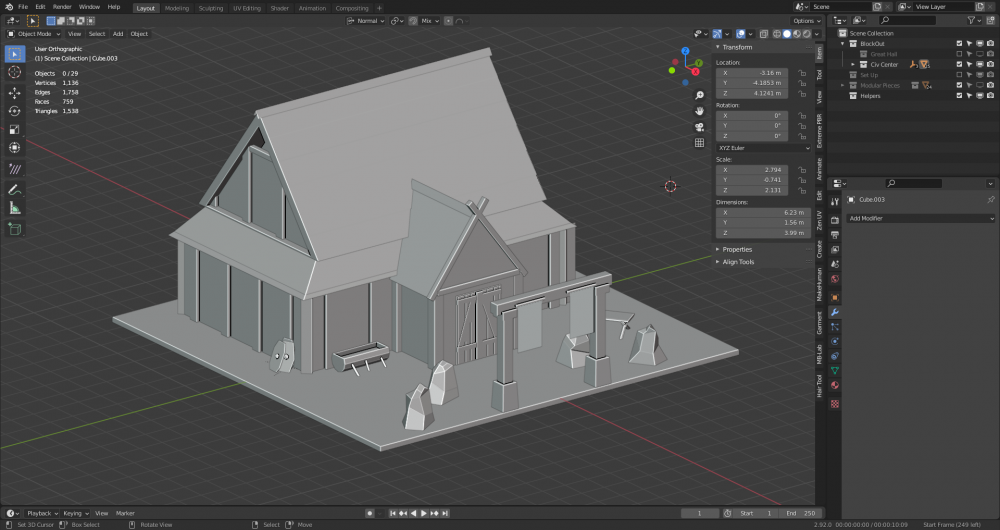
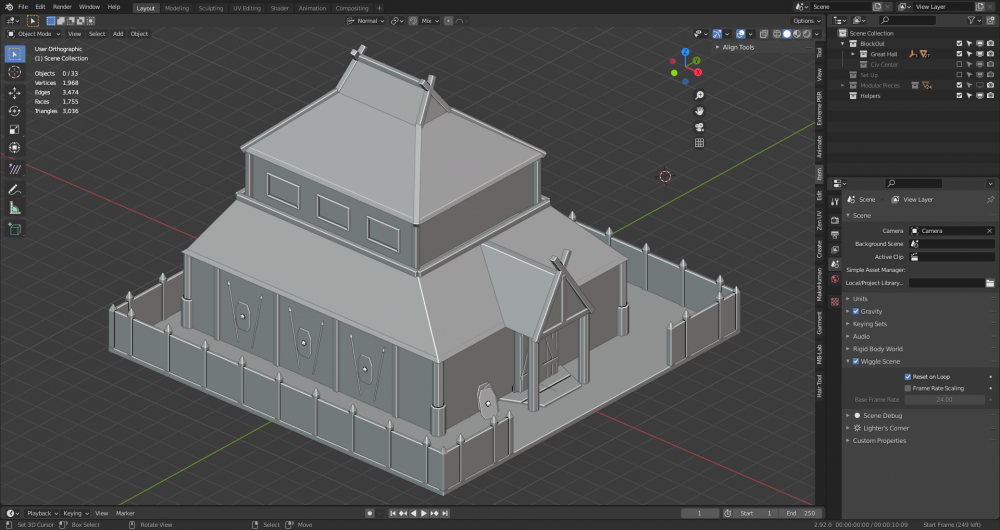


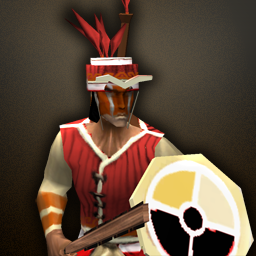

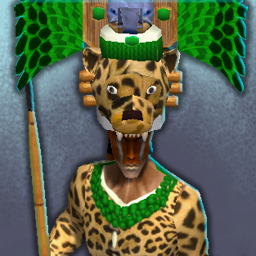
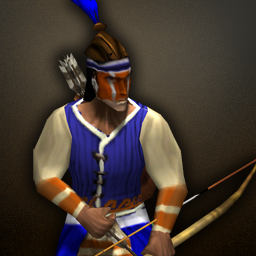
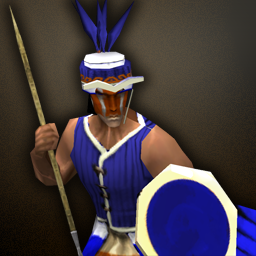

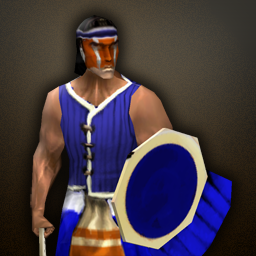


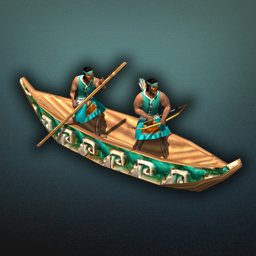
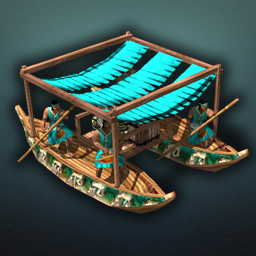
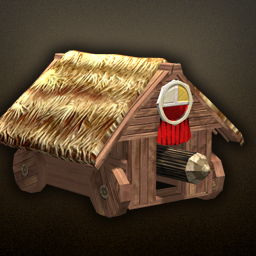
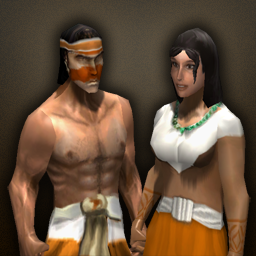
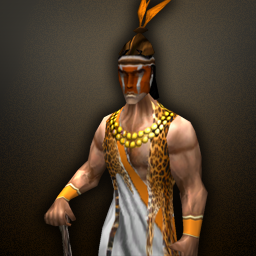

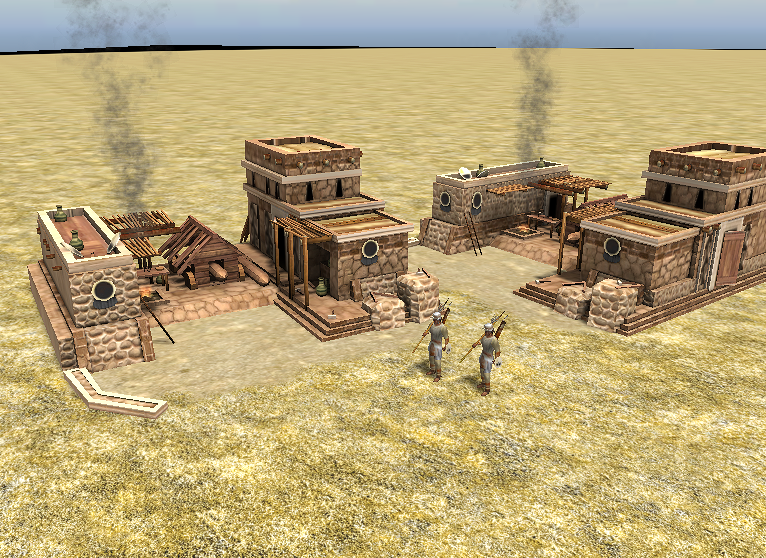
(1).thumb.gif.b5909d3df98a8ec15dc452423f219bc5.gif)


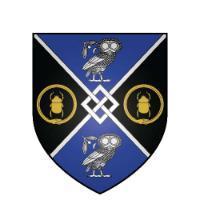

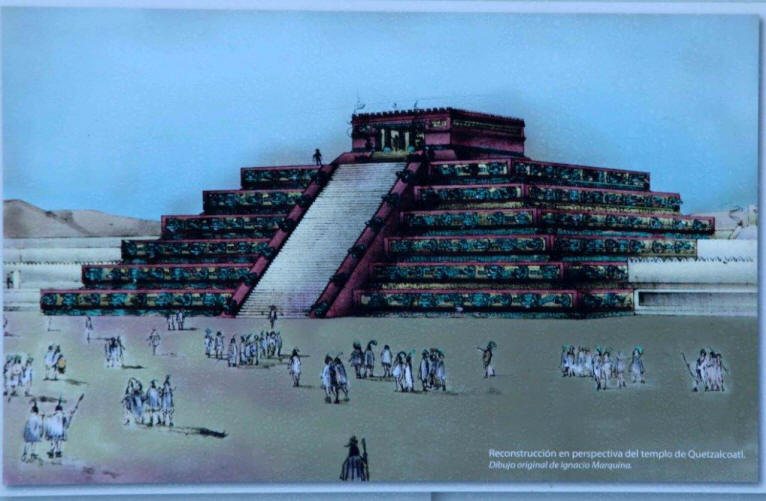

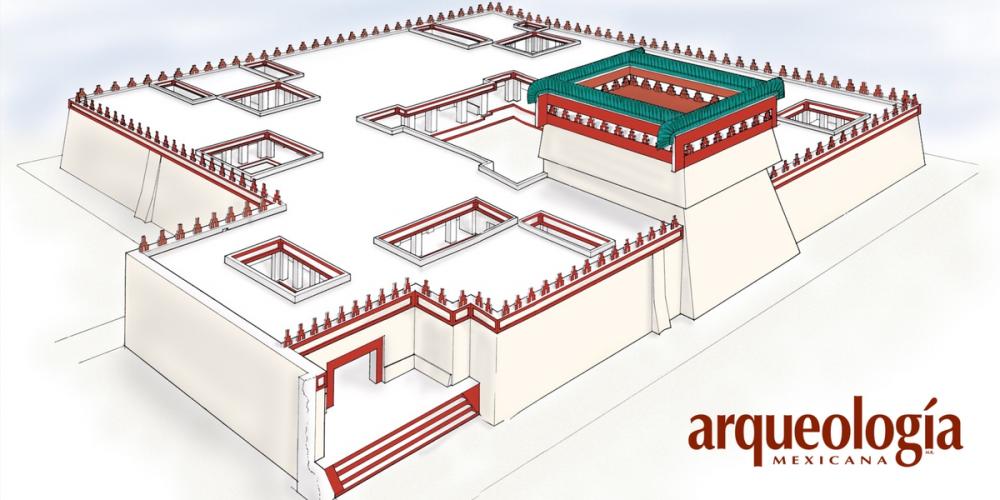
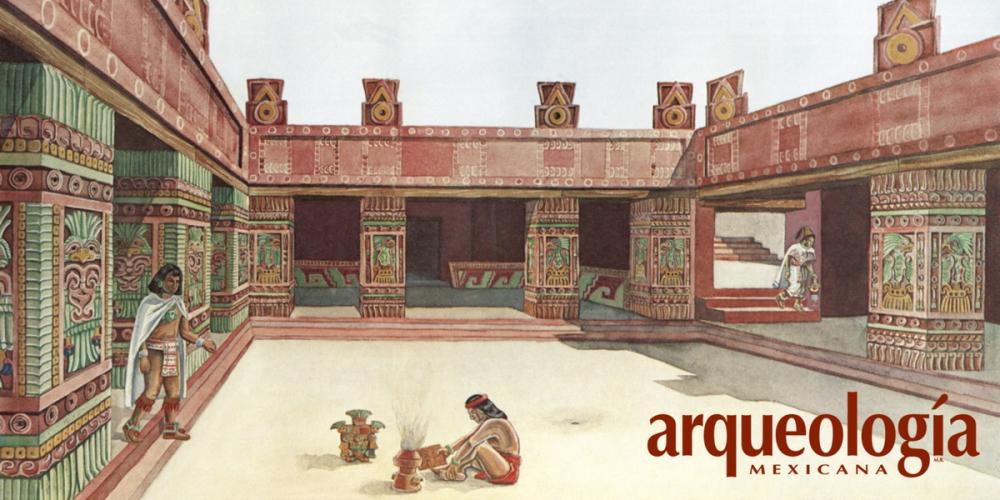
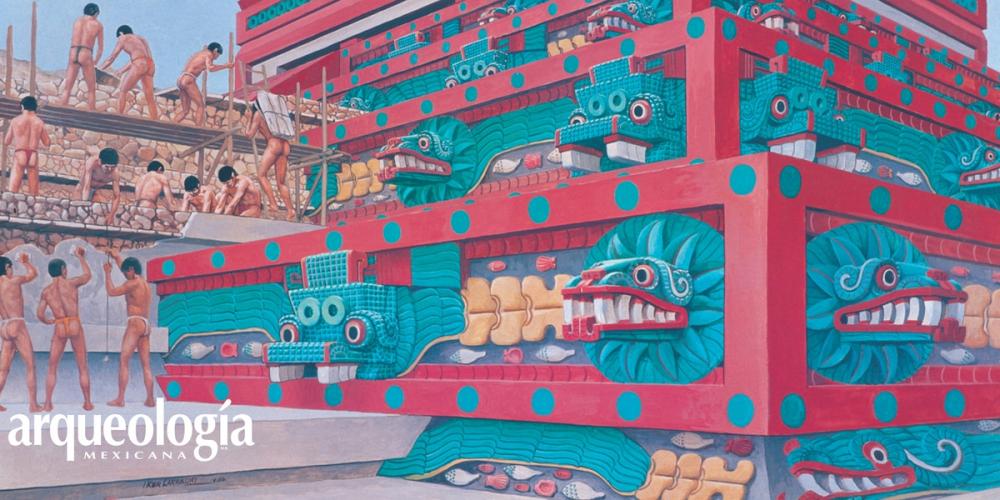

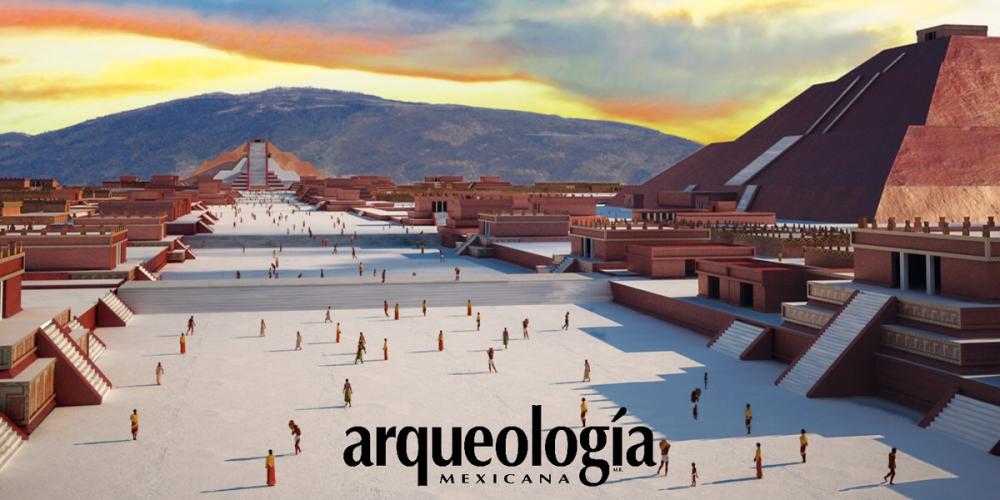

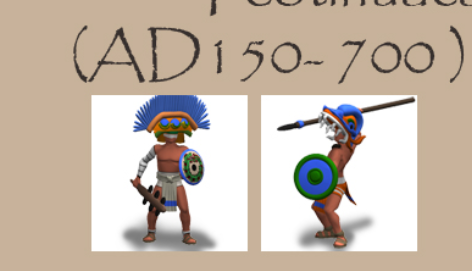

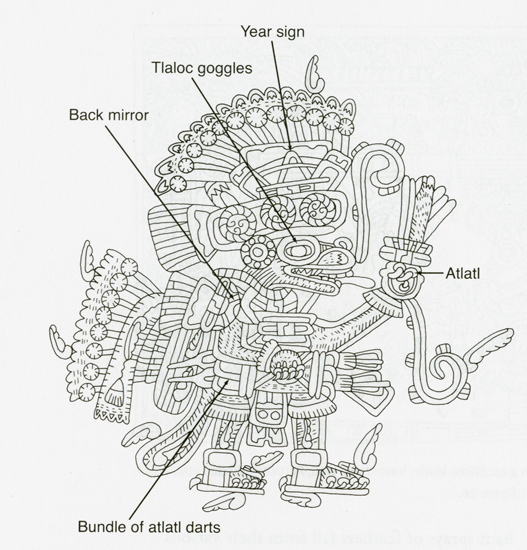
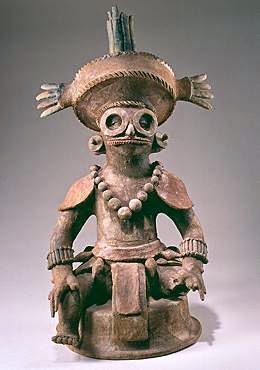
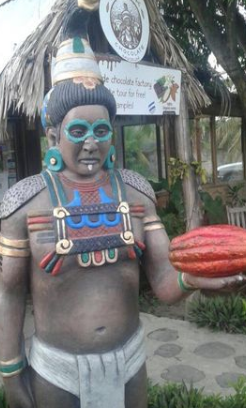
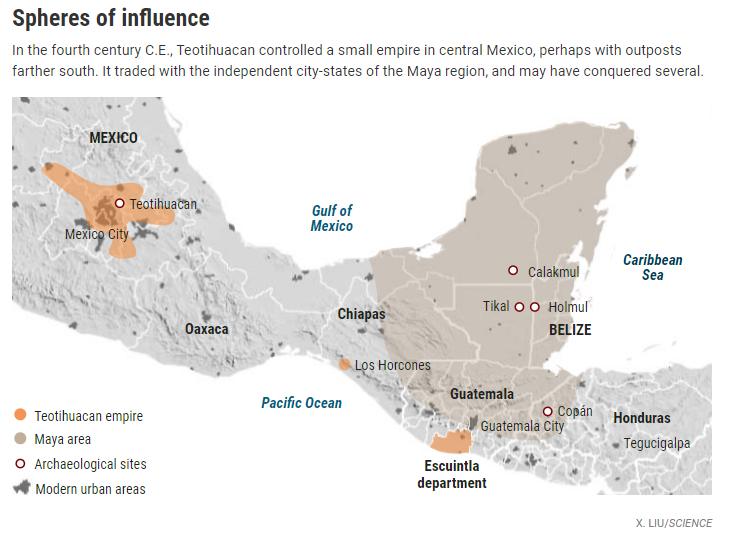



.thumb.jpg.b21ca1d0c15fb56b42c39b25a0a40815.jpg)

